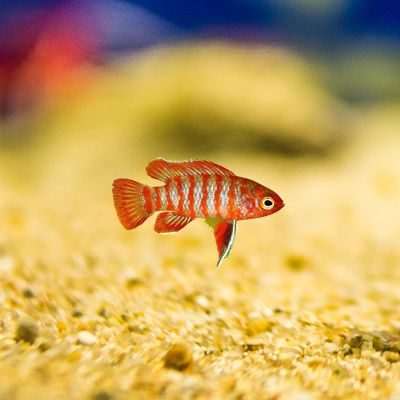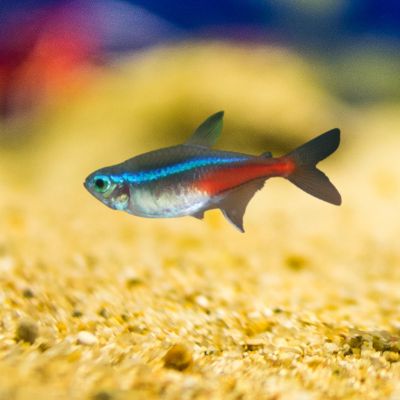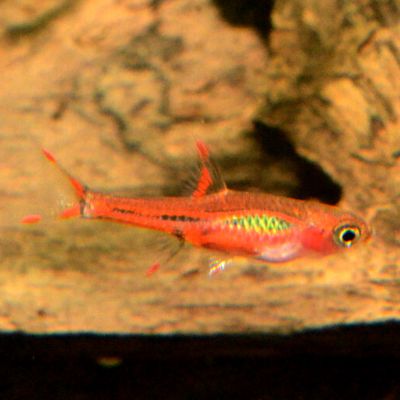Firstly there are many aspects to fish keeping and with so many types of fish of all different sizes available different types of fish tanks are required, in this article, we take a look at the nano fish tank explaining what one is, and the different types of fish that are suitable for them.
What is a nano fish tank?
A nano fish tank is a miniature fish tank that is perfect for small homes or offices. These tanks are usually less than five gallons in size, and they can be placed on a desk or countertop.
Nano tanks are a great way to keep a few fish, and they require less maintenance than a traditional larger-sized fish tank.
When choosing fish for a nano tank, it is important to select species that are compatible with each other and do not require a large amount of space.
What type of fish will thrive in a nano fish tank?
When choosing fish for a nano tank, it is important to select species that are compatible with each other and do not require a large amount of space.
Firstly, It is necessary not to place too many fish into a nano fish tank in just the same way as overpopulating a larger aquarium can cause fish keepers problems when trying to keep the water safe for their fish.
Secondly, it is important to check what size fish will grow to before purchasing fish for a nano tank, they may look tiny at the pet store but in a few months, you may find your fish become too big for your tank.
Let’s look at some good examples of freshwater fish perfect for a nano fish tank;
Scarlet Badis
The Scarlet Badis is a great choice fish for a nano tank, they are beautiful in colouration, and although they are classed as predatory fish they tend to be non-aggressive to other fish.
They would probably not be suitable if you were to keep shrimp in the tank but overall they are a great option for a nano fish tank.
The Scarlet Badis originates from the river tributaries of Bengal which have a sandy, fine gravel bottom, and dense vegetation.
They will do well in a nano aquarium that is planted with live plants and have a sandy substrate at the bottom of the tank.

Neon Tetra
Neon tetras are a popular choice fish for nano fish tanks, although they can grow to 1.5 inches when fully grown so don’t place too many into a very small nano tank.
They are naturally a schooling fish so they probably wouldn’t be happy alone, in a nano tank 3 or 4 neon tetras would be fine as a group depending on the size of your tank.
The neon tetra is very easy to take care of, they are a very hardy fish and will thrive in water quality with a pH of 7.0 or less.
The neon tetra originates from the streams of the Amazon basin in South America and is one of the most widely kept fish in the World.

Chili Rasbora
The Chili Rasbora is a perfect choice fish for a nano tank, they tend to grow to a maximum of 0.7 inches in size and are brightly coloured with a cheeky look about them.
They are a schooling type of fish so would be better kept in a group and they are very active fish.
The Chili Rasbora is a peaceful fish that will get on well with other species of fish, they can also jump out of the water so ensure you have a lid on the tank or they will end up on the floor!
Originating from the blackwater streams of Borneo they will prefer a darker substrate at the bottom of the tank.

Types of nano fish tanks
Cube Nano Fish Tank
A cube tank is a great option if you intend to plant live plants into the tank, having some depth will allow you to create a great environment for your fish and allow them to have hiding places but also have room to swim.
This example is the Interpet cube nano fish tank which has integrated LED lighting and an easy to care for filtration filter.
The tank has a 28 litre water capacity and is suitable for a small home or office environment.
Round Nano Fish Tank
The round nano aquarium design is a popular choice where 360-degree viewing is possible, in the same way, that we like to see our fish, the fish can also see what is around them and this type of tank is perfect for an office or small home with suitable space for all-round viewing.
This example is the Marina 360 aquarium which has a remote controlled multi colour LED lighting, a built-in filtration system, and a removable cover.
The round nano aquarium will hold 2.65 gallons of water and takes up very little space, perfect for your small fish to thrive.
Maintaining a nano aquarium
Although they are much smaller in size, nano aquariums require the same level of care and attention as regular-sized fish tanks.
Nano aquariums are typically defined as tanks that are 10 gallons or less, and they are often used to house small fish or invertebrates.
One of the challenges of maintaining a nano aquarium is that there is less room for error. For example, overfeeding can quickly lead to water quality issues, and rapid changes in water parameters can be deadly for small fish.
As a result, it is important to take a slow and steady approach when setting up and caring for a nano aquarium.
Another key consideration is filtration. While small canister filters are often used in larger tanks, Hang-on-back (HOB) filters are a better option for nano aquariums unless the tank has a built-in filtration system.
HOB filters are compact and easy to set up, and they provide good filtration without creating too much water movement.
Regular 20% water changes should be carried out in the same way that a larger tank would be maintained, this process should be carried out weekly or fortnightly depending on the amount of fish in the tank.
It is always a good idea to test the water regularly with a water test kit, or strips to ensure the water is kept safe for your fish.
With proper care, a nano aquarium can be a beautiful and low-maintenance way to keep fish.
Last update on 2024-07-25 / Affiliate links / Images from Amazon Product Advertising API
Conclusion
A nano fish tank is a great way of keeping small fish, it is important to not put too many fish in the tank or it could affect the pH levels in the water quite quickly. Maintaining a nano aquarium is very similar to the maintenance required with a larger fish tank, but with there being less water, the maintenance may need to be done more frequently.
It is always a good idea to check pH levels regularly with a water testing kit to be assured that the tank is optimum for your fish, don’t overfeed the fish as this can cause spikes in the pH levels.
We hope you found this article useful and that you enjoy your fish-keeping experiences whether keeping small fish or a larger aquarium set up.







